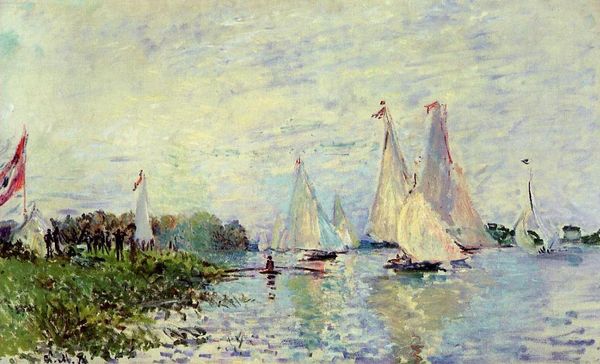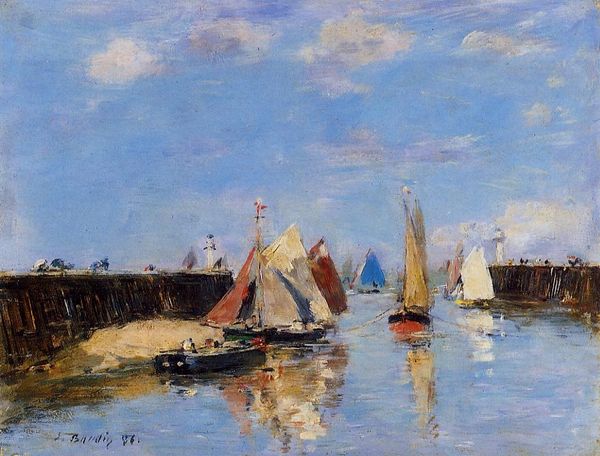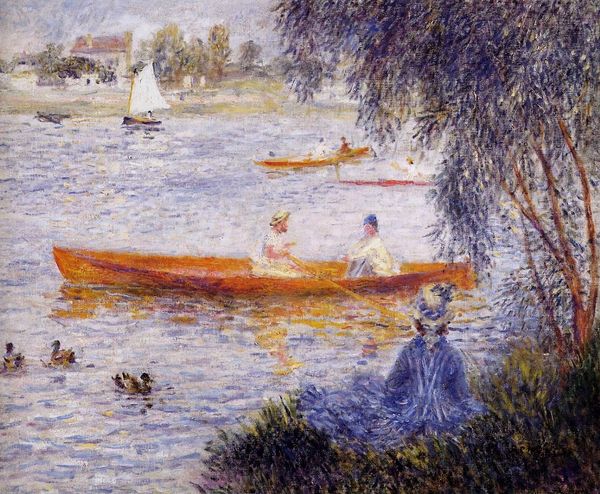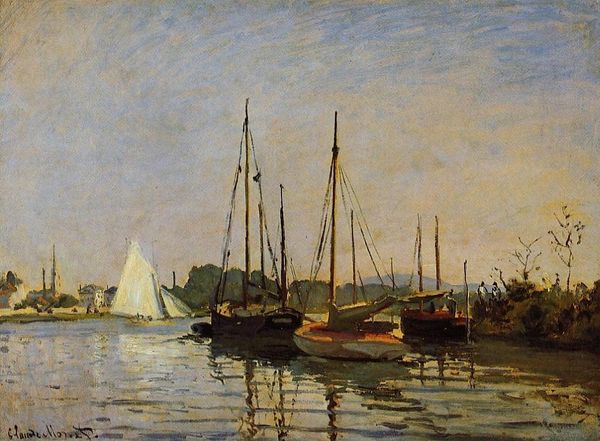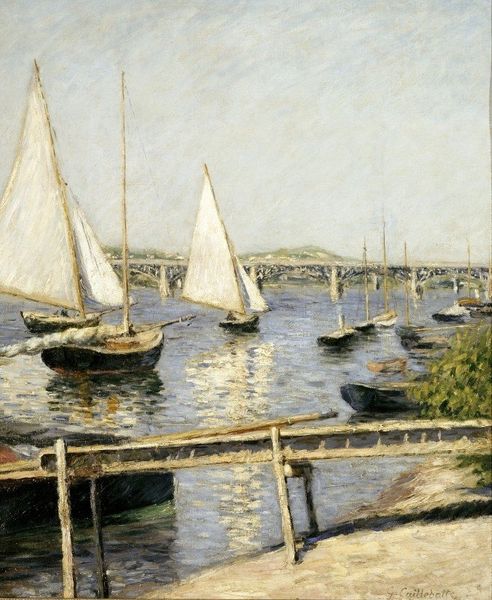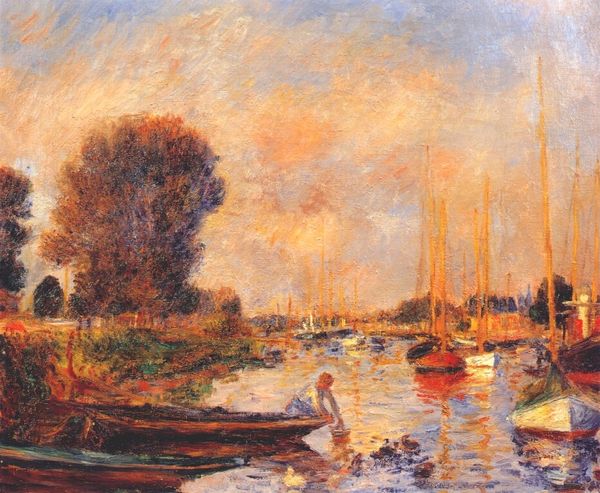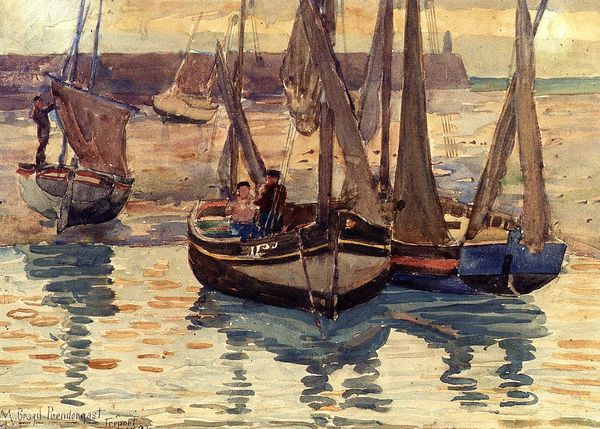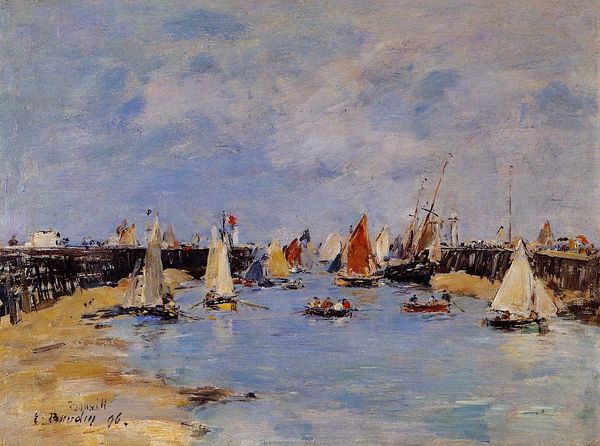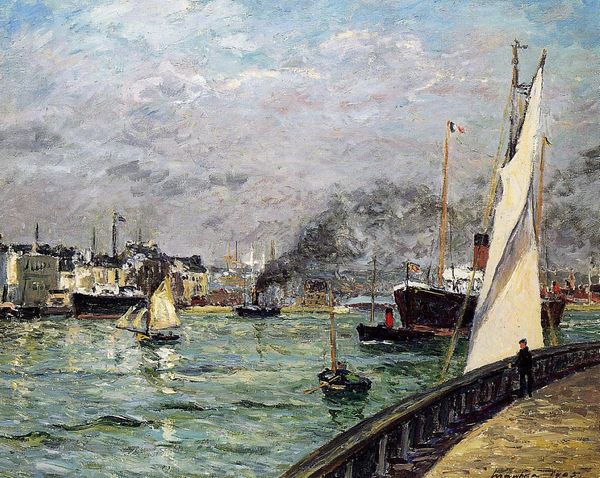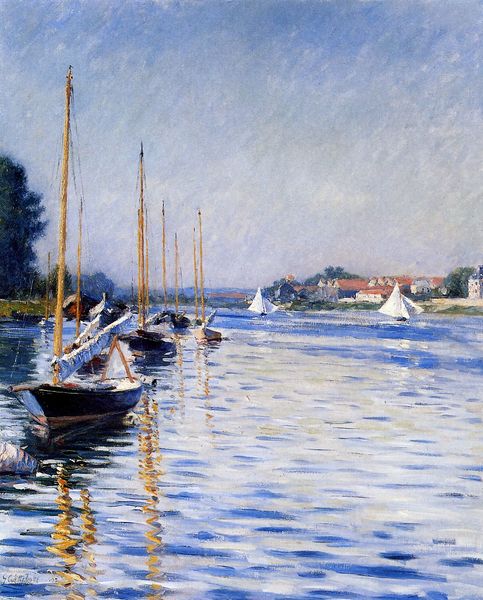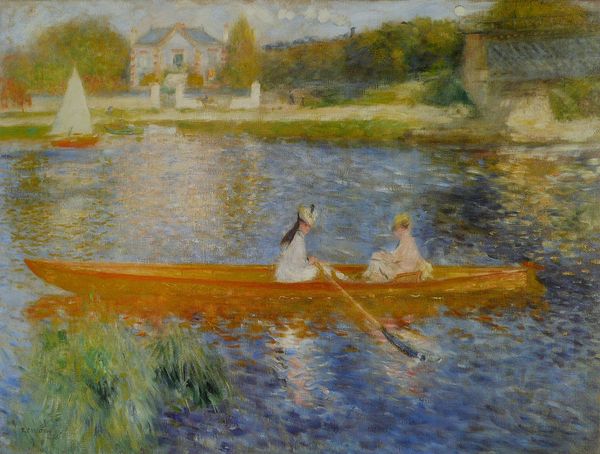
Sailboats at Argenteuil 1874
0:00
0:00
pierreaugusterenoir
Portland Museum of Art (PMA), Portland, ME, US
plein-air, oil-paint
#
impressionism
#
plein-air
#
oil-paint
#
landscape
#
figuration
#
water
Copyright: Public domain
Curator: I find myself immediately drawn into the serene atmosphere; it’s soft and muted, but alive with gentle activity. It evokes a palpable feeling of quiet leisure. Editor: That feeling comes, in part, from this being an archetypal Impressionist scene. What we are looking at is Pierre-Auguste Renoir’s “Sailboats at Argenteuil,” painted in 1874. This oil-on-canvas artwork is currently part of the collection at the Portland Museum of Art in Maine. Curator: It's remarkable how Renoir captures the quality of light shimmering on the water's surface. Those dabs of ochre and violet give the water a vitality that suggests deeper psychological currents, wouldn't you say? The way light refracts wasn't merely aesthetic; it spoke to shifting perceptions and fleeting moments in life itself. Editor: Absolutely. The act of painting en plein air, which means "in the open air," became increasingly important, offering artists immediacy in capturing natural light. Argenteuil, where Renoir painted this, was then a popular leisure spot near Paris. It's fascinating to consider how locations like this played into burgeoning middle-class ideas about leisure. These images fueled societal aspirations. Curator: And notice the absence of hard lines—how Renoir’s application of brushstrokes builds soft forms, capturing light instead of contour. The symbolism is fascinating—the sailboats acting as metaphors for life's voyage, catching light along their paths like hopes illuminated. Water, often representing the unconscious, here seems calm but reflective. Editor: Agreed, and beyond just symbolism, images of leisure helped normalize bourgeois social life. By representing leisure as picturesque and tranquil, these paintings were integral in shaping a collective vision of modern life. I wonder to what extent that ideal then masked the realities of an increasingly industrialized France. Curator: Yes! And it shows us the deep intertwining of human desire and projected image. I always find that dichotomy endlessly revealing about cultural consciousness. Editor: So, “Sailboats at Argenteuil” encapsulates this, a brief but beautiful glimpse into a formative moment, and it is still affecting how we process light, leisure, and class today. Curator: Precisely. We come away from this artwork sensing light—its effect both outwardly perceived and intrinsically felt.
Comments
No comments
Be the first to comment and join the conversation on the ultimate creative platform.

